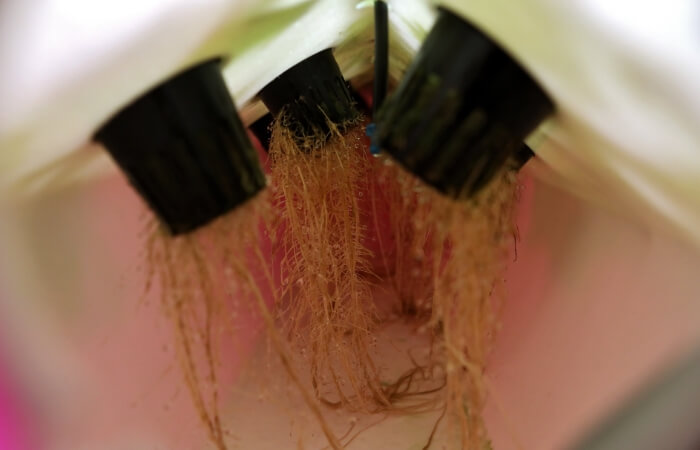Long roots are common in hydroponic gardens, but is it safe to trim them without harming the plant?
Yes, it’s perfectly fine to prune roots in hydroponics to keep them tidy and avoid issues due to overgrowth. However, there are guidelines on when and how to trim roots correctly, which I explain in this guide.

Refrain from letting the task of root trimming in hydroponics intimidate you. Instead, learn how to master the skill and help your garden flourish!
Is Root Pruning in Hydroponics Important?
Pruning the roots of hydroponic plants is necessary to keep your garden healthy and produce abundant fruits and flowers.
Thick root growth can block their ability to uptake nutrients efficiently as the water will not flow around all sides of the roots. As a result, root overgrowth can lessen the plant’s ability to grow to its full potential.
Extra long root growth can also cause the ends to become rotten and fall off, clogging the hydroponic system filters. Root rot can also transfer disease to other plants in the system. Overgrown roots can also tangle with the roots of plants nearby, causing damage.
Proper pruning of roots will encourage lateral root spread and small branches that enhance nutrient uptake performance, resulting in more abundant foliage growth.
Remember that pruning roots take skill. You aren’t trimming large chunks of roots flat off the bottom of the plant.
Instead, the goal is to maintain a uniform root length, shape, and health that optimizes nutrient absorption and lessens the chance of decaying tendrils from breaking off and clogging the hydroponic system.
Root Pruning Guidelines For Hydroponic Plants
Hydroponic plants require routine root maintenance, starting from the moment a plant develops a robust root system. This stage should occur after several weeks of growing in the nutrient-rich fluid.
Access to the roots for trimming will vary with the type of hydroponic garden system you use. However, because the roots are easily visible, pruning the offending tendrils isn’t that difficult using a sharp and sterilized set of scissors or small pruners.
Never trim away more than 15% of the root ball during any growth stage. Excessive trimming will stress the plant and reduce growth. If you spot a lot of root rot, it’s best to remove the plant entirely from your central system until you can treat it and revive it back to health.
For hydroponic plants growing inside vented pots, gently lift the container from the tube until all the roots are exposed. For plants growing in a drip or mist system, you can trim them while they hang.
Roots should appear white or creamy, with a smooth and firm touch. Expect the longest roots in the ball to reach up to a foot or more, but most should be trimmed back to around six to ten inches for most hydroponic system types.
Follow these hydroponic plant pruning guidelines to achieve the best results:
Early Growth Stage Pruning
During the first few months of plant growth, it’s essential to trim away roots that don’t conform to the rest of the root ball. Cut back overly long tendrils to match the length of the main group of roots.
Always clip away any brown or dying roots you spot and any roots that feel slimy to the touch.
Vegetative Growth Stage Pruning
Once plants establish a vigorous root system and thick foliage, you’ll want to trim back the extra-long roots by several inches, but don’t be concerned with making them conform to the main root ball.
After trimming back the length, you’ll want to trim off any roots growing out of the sides of the container that stick out wider than the circumference of the container base.
This trim will allow you to easily lift the plant and pot from the opening without breaking off roots into the nutrient solution and clogging the system.
Flowering Growth Stage Pruning
Once you see buds or flowers on your hydroponic plants, you should stop pruning the roots. The plants do not need any stress during this growth stage that will hinder the development of flowers, fruits, and vegetables.
The only exception to this root-pruning rule is if you see dying or damaged roots, which you can clip to maintain plant health.
In Summary
Monitoring the roots of your hydroponic plants helps you spot issues such as diseases or overgrowth before they can ruin your crop.
Trimming problematic roots is the only way to ensure your system runs efficiently and your plants grow as healthy as possible.
The guidelines above will help your plants maintain strong root development that will produce a healthy and abundant hydroponic garden, so please give them a try!










